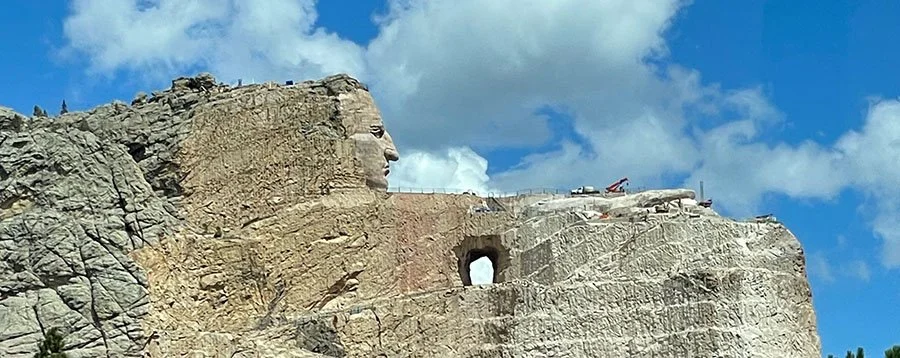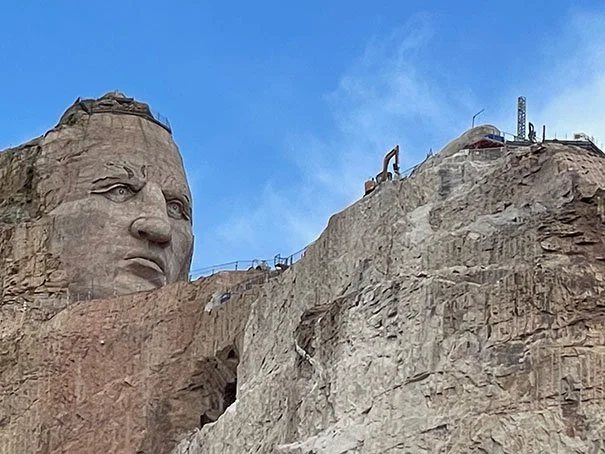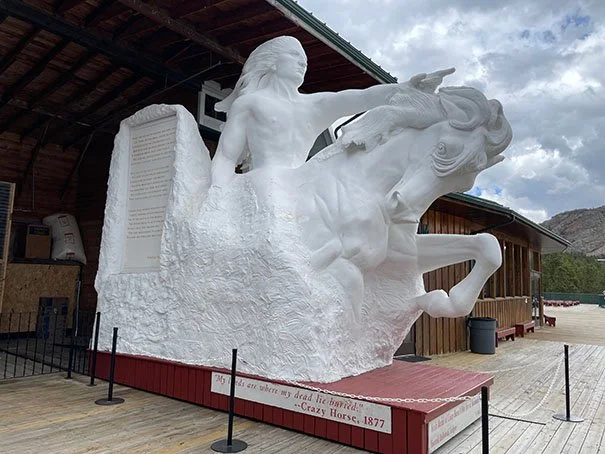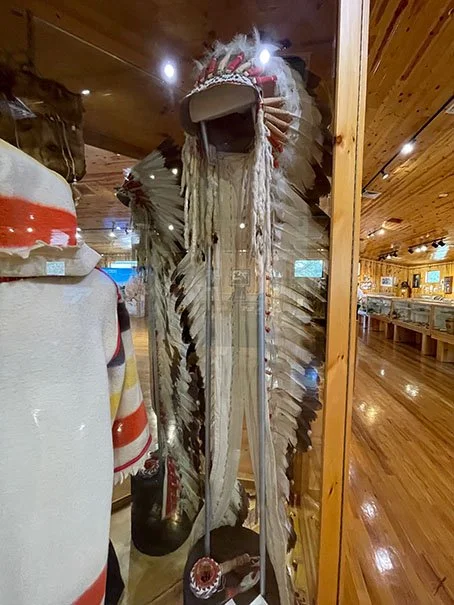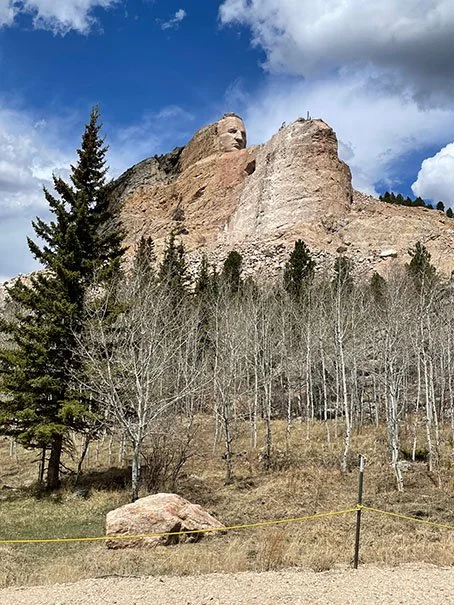Crazy Horse Memorial
Crazy Horse Monument, Black Hills, SD (Completion as of May 2023)
Your Great-Grandchildren Might See This Finished
Destinations | History and Monuments
The Crazy Horse Memorial in South Dakota’s Black Hills is a work-in-progress monument to Oglala Lakota war leader Crazy Horse. This memorial will be a work in progress well beyond our lifetimes, so you can visit periodically to see progress.
As of my visit in May 2023, the face and left index finger were complete.
The Crazy Horse Memorial is part of a larger effort to protect and preserve Native American cultures and traditions. In addition to the mountain-cut memorial itself, the campus includes a museum and university to give Native American students a start in college.
Crazy Horse
Crazy Horse fought the United States government to protect the interests of the Lakota people. In June 1876, Crazy Horse defeated the U.S. 7th Cavalry, led by Lt. Col. George A. Custer, at the Battle of the Little Bighorn (or Battle of the Greasy Grass to the Lakota) during the Great Sioux War.
After Crazy Horse fought his last major battle of that war in January 1877, his people were weakened by winter and hunger. He decided to surrender to protect them and headed to Fort Robinson in Nebraska. Several months after he surrendered, Crazy Horse was fatally wounded by bayonet while in conflict with U.S. troops due to old rivalries and misunderstandings.
Work Begins
Years later, Lakota Chief Henry Standing Bear contacted Polish sculptor Korczak Ziolkowski after Ziolkowski won first place with a sculpture at the 1939 New York World’s Fair.
The memorial is being carved out of Thunderbird Mountain, which is considered sacred among Native Americans. Work on the memorial commenced on 3 June 1948 with the first blast on the mountain.
The Crazy Horse Memorial website has more in-depth information about the Crazy Horse Memorial, Chief Standing Bear, and the decades of work Ziolkowski put into the memorial before he died in 1982 and handed the work off to a new generation of his family.
My Visit
The Crazy Horse Memorial is visible at a distance from the Indian Museum of North America and Crazy Horse Welcome Center. Before heading to the exhibits, I recommend watching the orientation movie about the Crazy Horse Memorial, Chief Standing Bear, and the Ziolkowski family that provides more context into the memorial and exhibits you’ll see.
This museum includes:
Native American Educational & Cultural Center: Includes many Native American artifacts reflecting their diverse histories. The center also showcases unique pieces of Native American artists.
Mountain Carving Gallery: Features the tools Ziolkowski used in the early years of cutting the memorial. This area includes rocks from the mountain, left over from cutting, that are available for visitors to take free of charge (I took one for display on my travel shrine).
Ziolkowski Family Life Collection: The original Ziolkowski family log cabin is onsite and still used for family functions. It is open to visitors as is his studio.
Later, I took a bus to the mountain to see the Crazy Horse carving up close. The bus stop is right outside the museum; it is an additional admission, but I paid only $5 when I went, and you get closer to the memorial. Guided van rides are also available.
Opposition
Normally, I would not include this because most, if not all projects, have opposition. It’s just how the world works. However, I bring it up here because I am not Native American and am not fully educated about Native American culture and how those beliefs could conflict with the activities of this memorial.
Some opposition to this project is from Native Americans who:
Don’t believe Crazy Horse would approve of being memorialized
Don’t believe Chief Standing Bear should have approached Ziolkowski without consulting Crazy Horse’s descendants
Believe the Ziolkowski family may be profiting from the memorial
View this as desecration of sacred land
If any Native American reads this and wants to provide additional education, please do not hesitate to contact me.
Some additional reading includes:
Voice of America: Crazy Horse Memorial Generates Mixed Feelings
Note: “Native American” is the preferred term for the indigenous people of the United States. In Canada, they are “First Nations.” Annie All Around uses the preferred terms unless “Indian” is included in the proper name of a place.

